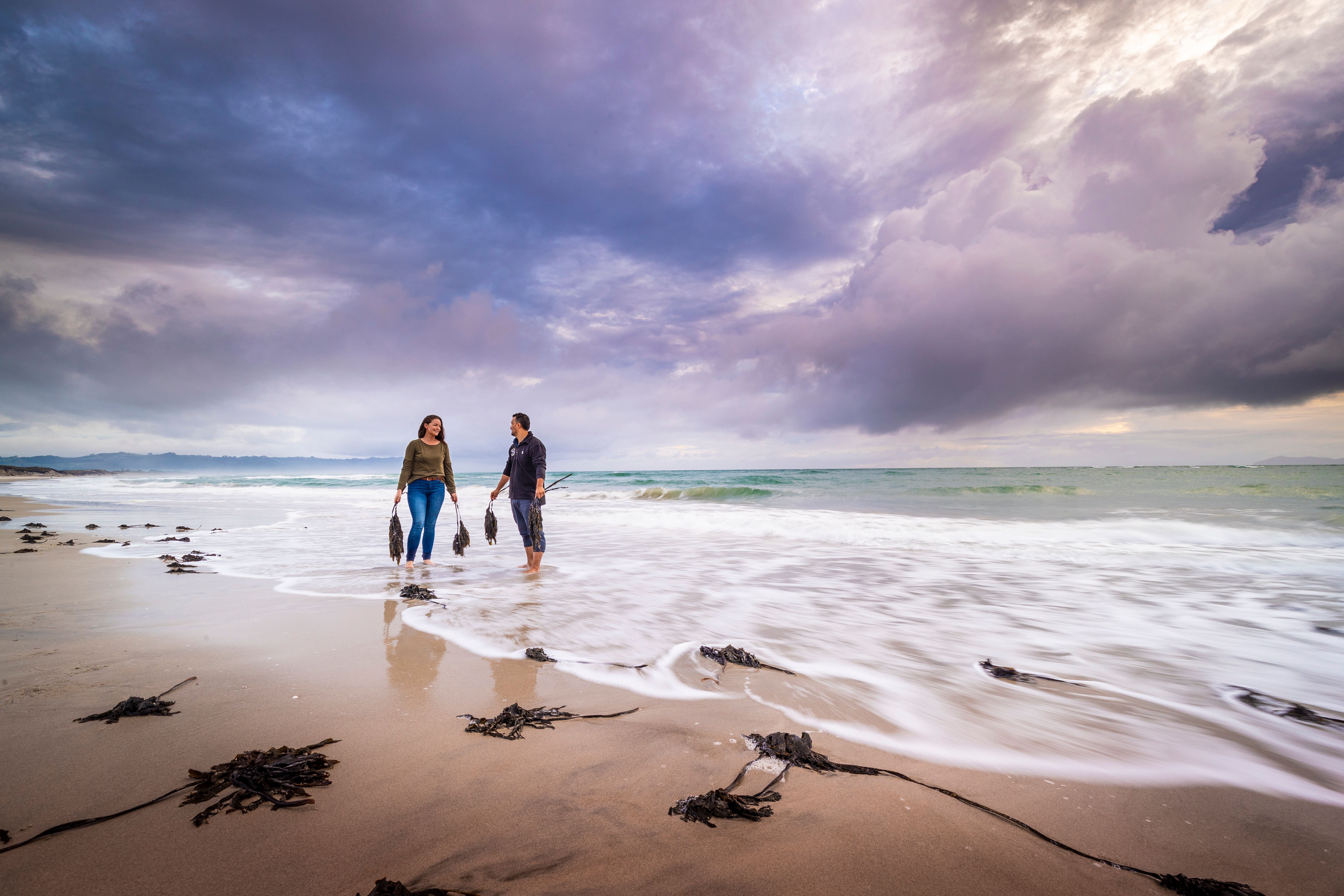
Bill Gallagher
One of New Zealand’s greatest contributions to the world of agriculture came with the combination of two quite different technologies – fencing and electricity. Imagine a fence that did not rely on sheer strength for its effectiveness. This allows the fence to be light, and therefore easily portable. And a portable fence, easily moved around the farm, opens the way to revolutionise agriculture with brand-new grazing practices.

“When my father Bill Senior started this company in 1938, he probably hadn’t even heard the word ‘innovator’ but that never stopped him from being one.”
The electric fence is an integral part of New Zealand life. It’s fitting then that as well as being part of our cultural DNA, the electric fence was born here.
In the 1930s, Alfred William (Bill) Gallagher (b. 1911, d. 1990) developed a plan to keep Old Joe the horse from scratching itself on the fenders of the family car. Bill cunningly connected the car to a high voltage spark magneto and wound it up with a rubber band. When the horse rocked the car, looking for a good scratch, the rubber band spun sending a current through the car, and through Joe. It worked. Joe never went near the car again. Like us, animals will go to great lengths to avoid electric shocks. This led Bill to begin experimenting with electrified fences – and not just around cars, but around paddocks too.
The idea wasn’t originally Bill’s. “I read in America where they were using electrified wire to hold stock.” But it wasn’t the original idea that mattered in this case. It was that Bill developed the idea from that seed to a successful electric fence product which was later to return to America, and elsewhere, as the best electric fence technology in the world.
To begin with, Bill Gallagher linked about a mile of fence on his Waikato farm to the mains power with a current limited supply. It worked fine, but laws at the time prevented the mains power supply from being used in this way. Bill developed a battery-powered version and, by 1938, he was selling them.
“The neighbours wanted these things, so I made them some; I’d make half a dozen and go out on the road, sell them, leave them on a month’s trial, and people would mostly pay for them.”
After World War II, Bill began full production of his electric fences. With a small staff operating from an engineering workshop in Hamilton, he made not only the battery electric fence units, but other farm equipment like fertiliser spreaders, cow bails, hay barns, cattle stops, and tractors made from old cars.
In 1961, New Zealand law was changed to allow electric fences to be connected to the mains electricity supply. At that time, Ruakura Agricultural Research Centre scientist Doug Phillips took this opportunity to begin experimenting in technology for mains-powered electric fences. At first, he thought he should electrify the ground! Not surprisingly, that turned out to be unworkable at any scale, so he developed a low-impedance electric fence with a very high surge of power that came on for less than 300 microseconds/second each pulse.
The problems battery-powered fences had with shorting on vegetation were solved, because the high power mostly burned any vegetation off the wires. The new technology extended the possible length of electric fences from just a few hundred metres to tens of kilometres, at the same time reducing costs. Doug Phillips’ new solution was a true worldwide first. It made electric fences encompassing whole farms, and wildlife, like elephants, feasible – and it is the basis for all modern electric fences. The Gallagher team (along with other New Zealand fence manufacturers) were quick to recognise the brilliance of the idea and adopt it.
The company began exporting in the late 1960s, and saw immediate success first in Australia, then in the UK, France and the US. During the mid-1970s, the company doubled its size and production every year. Innovation hasn’t stopped at the Gallagher Group with success; not even with Bill’s death in 1990.
Bill’s son William , now Sir William Gallagher, took over and led it on to great success as an iconic Aotearoa New Zealand company. In 1988, the Gallagher Group diversified into the security market, using their expertise controlling animals to do the same with ‘two-legged livestock’. Now, the company is trusted to protect some of the highest security environments in the world – from prisons to palaces, universities to technology parks, and government buildings to global businesses in about 160 countries. Gallagher is a government-approved provider to all the ‘Five Eyes’ nations.
To date, the Gallagher Group holds hundreds of patents and leads the world in electric fence technology. Not only for sheep and cattle, but antelope, kangaroos, zebras, elephants and rhinos are among the animals contained by New Zealand electric fences around the world. The Gallagher Group have also sold thousands of kilometres of electric fences to Malaysia to keep elephants out of palm oil plantations. The company continues to lead the way in New Zealand manufacture and export, exceeding $300 million in revenue, sinking 15 per cent of that back into R&D, and winning awards for manufacture, design, and exporting excellence.
Not only did the electric fence prove to be a fine New Zealand export, it also encouraged innovative farming in this country. During the 1960s and 1970s, the electric fence began to change farming practice, reducing the cost of growing animals, improving pasture, reducing weeds and saving millions in fertiliser. New Zealand became the best and most efficient farming nation in the world. And if you want to argue with that fact, you can argue with Bill Gallagher and his electrocuting car!
Explore the Legacy Project
.jpg)
Explore the Legacy Project
.jpg)
Explore the Legacy Project
.jpg)



.jpg)

